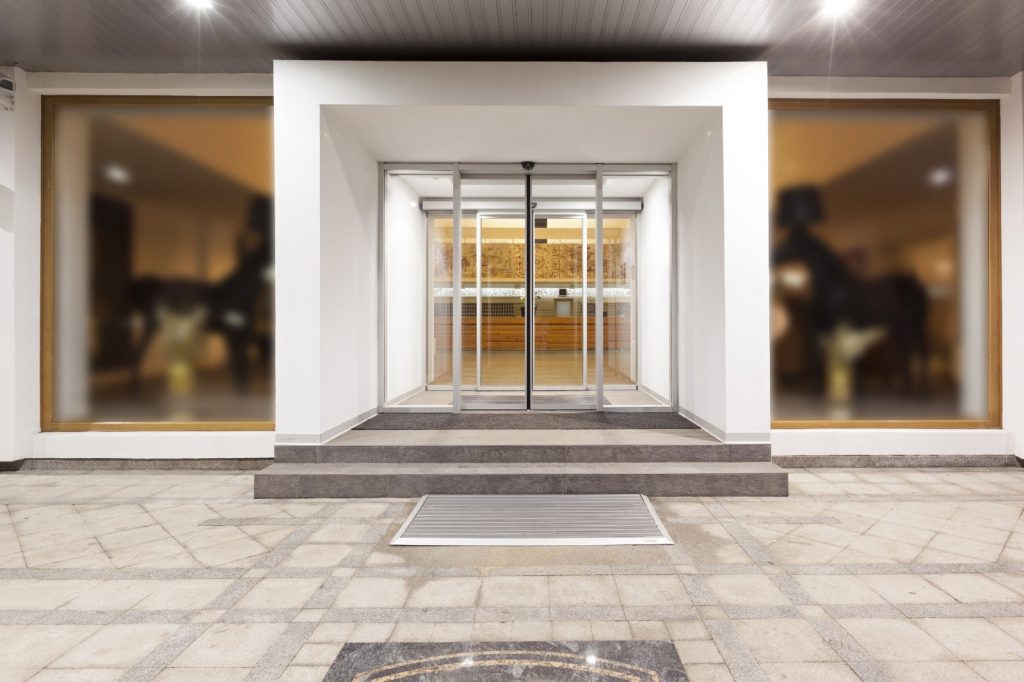
Revolving door systems are doors used for entrances and exits, consisting of sections that revolve around a central axis. Revolving door systems can be of two types: automatic or manual. Automatic revolving door systems are activated through sensors or buttons and operate with an electric motor. Manual revolving door systems, on the other hand, are turned by human force.
Revolving door systems are typically made of glass and metal materials. Glass material provides transparency and aesthetics, while metal material offers durability and security. There are gaps between the sections of revolving door systems. These gaps allow for airflow and prevent pressure differences.
The working principle of revolving door systems is as follows: The sections of the revolving door are fixed at a constant angle around a central axis. This ensures that a section always opposes the entrance or exit. Thus, a continuous passage is provided for people entering or exiting. The gaps between the sections of the revolving door also facilitate air circulation.
What are the advantages of revolving door systems?
Revolving door systems offer numerous advantages, including:
Energy savings: Revolving door systems reduce heat loss by minimizing the temperature difference between the interior and exterior. This, in turn, reduces the energy consumption for heating or cooling. Additionally, automatic revolving door systems save electricity by not operating unnecessarily through sensors. Security: Revolving door systems enhance security by controlling entrances and exits. For instance, automatic revolving door systems can prevent unauthorized access or can be locked in case of emergencies. Moreover, the use of metal materials provides resistance to situations like fires or explosions. Hygiene: Revolving door systems maintain hygiene by preventing the entry of dust, dirt, or microbes. Especially during periods of contagious diseases like pandemics, revolving door systems reduce the risk of transmission by minimizing human contact. Aesthetics: Revolving door systems offer a modern and stylish appearance. Glass material allows natural light to enter, creating a spacious environment. Additionally, revolving door systems can be designed in various colors, shapes, and sizes. Revolving door systems are doors consisting of sections that revolve around a central axis, used for entrances and exits. They provide several advantages, including energy savings, security, hygiene, and aesthetics. Revolving door systems can be automatic or manual and are typically made of glass and metal materials. The working principle of revolving door systems ensures a continuous passage for individuals and promotes air circulation.






